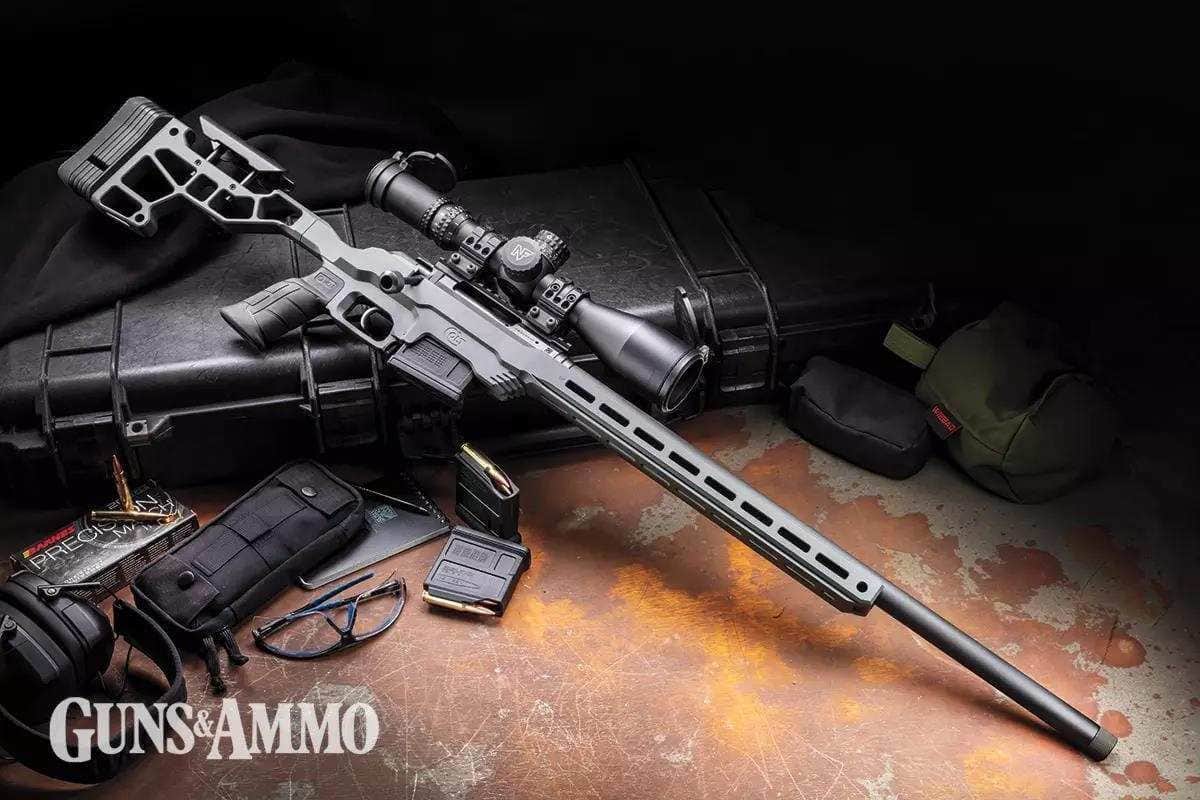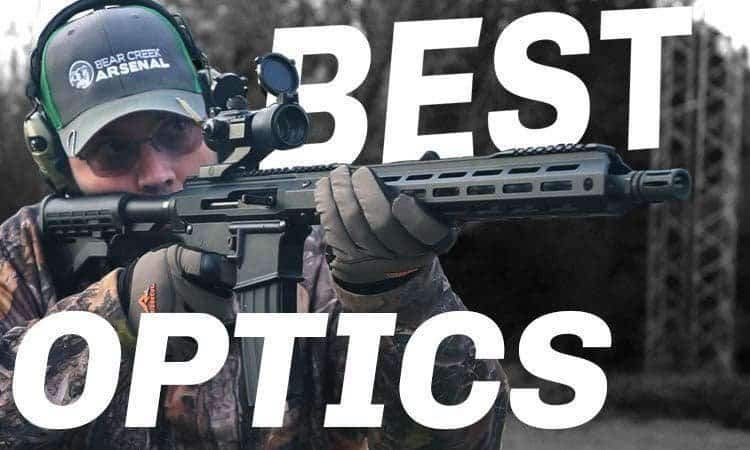The most common sniper rifle caliber is .308, known for its accuracy and stopping power. It is widely used globally by military and law enforcement agencies for long-range precision shooting.
This popular caliber offers a good balance between range, recoil, and ballistic performance, making it a top choice for snipers in various tactical situations. Sniper rifles play a crucial role in modern warfare, providing precise and lethal firepower for engaging targets at long distances.
The. 308 caliber stands out for its reliability and versatility, making it a preferred option for professionals who require consistent accuracy and terminal ballistics in the field. We will explore the characteristics of the. 308 caliber, its advantages and limitations, as well as why it remains the go-to choice for many snipers around the world.

Credit: en.wikipedia.org
The Significance Of Sniper Rifles
Sniper rifles are crucial for long-range precision in military and law enforcement, with the most common caliber being the. 308 Winchester. This popular caliber offers excellent accuracy and stopping power, making it a preferred choice for sniper missions. Its reliability and effectiveness make it an indispensable tool for marksmen in various tactical scenarios.
Evolution Of Sniper Rifles
Sniper rifles have a rich history, evolving from simple long-range firearms to advanced precision weapons.
Early sniper rifles were modified from standard rifles to improve accuracy and range.
Role In Modern Warfare
Sniper rifles play a crucial role in modern warfare, providing long-range precision to eliminate high-value targets.
Modern sniper rifles are equipped with advanced optics and technology for enhanced accuracy.
Sniper rifles are essential tools for military operations, offering unmatched precision and lethality.
They provide a strategic advantage by taking out threats from a safe distance, protecting troops and civilians.
Understanding Sniper Rifle Calibers
Understanding Sniper Rifle Calibers
Sniper rifles come in various calibers, with each caliber serving a specific purpose based on factors like range and target. Let’s delve into the defining aspects of sniper rifle calibers.
Defining Caliber In Sniper Rifles
Caliber refers to the internal diameter of a rifle barrel and determines the size and type of ammunition a firearm uses.
Common Sniper Rifle Calibers
- .308 Winchester: Versatile caliber with excellent accuracy and manageable recoil.
- .338 Lapua Magnum: Known for long-range precision and stopping power.
- .50 BMG: Heavy-hitting round for extreme long-distance engagements.
In addition to these, .300 Winchester Magnum, 6.5 Creedmoor, and .338 Norma Magnum are popular choices among snipers.
Advantages Of Different Calibers
The advantages of different calibers play a crucial role in the performance of sniper rifles. The choice of caliber can significantly impact the long-range accuracy and overall ballistics of a sniper rifle. Understanding the advantages of different calibers is essential for shooters and marksmen to make an informed decision based on their specific requirements and operational objectives.
Long-range Accuracy
The caliber of a sniper rifle directly influences its long-range accuracy. Larger calibers such as .50 BMG offer exceptional stability and penetration at extended distances, making them suitable for engaging targets at extreme ranges. On the other hand, smaller calibers like .308 Winchester provide flatter trajectories and manageable recoil, making them versatile for engaging targets at medium to long ranges. The choice of caliber should align with the specific operational requirements, target distances, and environmental conditions to ensure optimal long-range accuracy.
Impact On Ballistics
The caliber of a sniper rifle plays a critical role in determining its ballistic performance. Higher caliber rounds exhibit superior kinetic energy and terminal ballistics, making them effective against fortified or armored targets. Conversely, smaller caliber rounds offer enhanced mobility and maneuverability for the sniper, allowing for rapid follow-up shots and target transitions. Understanding the impact of different calibers on ballistics is essential for optimizing the sniper rifle’s effectiveness in various tactical scenarios.

Credit: en.wikipedia.org
The Debate: Most Common Sniper Rifle Caliber
Sniper rifles often use the same caliber due to ammunition compatibility. The debate over the most common caliber typically centers around. 308 Winchester and. 338 Lapua Magnum, both known for their accuracy and long-range capabilities. Each caliber has its own advantages, appealing to different preferences among snipers.
Welcome to the ultimate debate: the most common sniper rifle caliber. A topic that has sparked numerous discussions among firearm enthusiasts, military personnel, and enthusiasts. When it comes to sniper rifles, the caliber chosen plays a crucial role in determining the performance and effectiveness of the weapon. In this article, we explore the pros and cons of the most common sniper rifle calibers and delve into the age-old debate of accuracy versus lethality.
Pros And Cons Of Common Calibers
Let’s begin by examining the key advantages and disadvantages of the most common sniper rifle calibers. Listed below are three of the most widely used calibers:
| .308 Winchester | .338 Lapua Magnum | .50 BMG |
|---|---|---|
| ✅ Widely available | ✅ Exceptional long-range performance | ✅ Unmatched long-range capability |
| ✅ Easy to manage recoil | ✅ Excellent energy retention | ✅ Devastating stopping power |
| ❌ Limited penetration | ❌ Expensive ammunition | ❌ Heavy and bulky |
As shown in the table, the .308 Winchester is a popular choice due to its wide availability and manageable recoil. It offers a balance between accuracy and portability, making it versatile for various scenarios. The .338 Lapua Magnum excels in long-range engagements, with exceptional energy retention and a capable ballistic performance. However, it does come with a higher price tag and more recoil. On the other hand, the .50 BMG reigns supreme when it comes to long-range capability and stopping power, but its heavy and bulky nature can hinder maneuverability. It’s important to weigh these pros and cons when deciding on the best caliber for your specific requirements.
Accuracy Vs. Lethality
One of the fundamental debates surrounding sniper rifle calibers centers on the trade-off between accuracy and lethality. While some argue that smaller calibers like .308 Winchester offer better accuracy due to lower recoil and flatter trajectories, others advocate for larger calibers like .50 BMG for their devastating terminal ballistics and ability to neutralize targets with a single shot. Striking a balance between precision and stopping power is essential for snipers, as they often encounter targets at different ranges and in diverse environments.
To achieve optimal results, snipers often consider factors such as target distance, environmental conditions, and mission objectives. A well-placed shot with a smaller caliber can be just as lethal as a larger caliber, while minimizing collateral damage. However, when engaging targets at extreme ranges or facing fortified positions, the need for a heavier caliber with increased energy becomes evident.
Ultimately, the debate of accuracy versus lethality is subjective and depends on various tactical requirements. It is crucial for snipers and decision-makers to evaluate their specific mission parameters and select the most appropriate caliber that aligns with their operational needs and constraints.
Choosing The Ultimate Precision
When it comes to sniper rifles, precision is of utmost importance. And one of the key factors that contributes to this precision is the caliber of the rifle. Selecting the right caliber can make all the difference in achieving accuracy at long ranges. In this article, we will explore the most common sniper rifle calibers and discuss the factors that influence the choice of caliber, as well as future trends in sniper rifle calibers.
Factors Influencing Caliber Selection
Choosing the perfect caliber for a sniper rifle involves considering various factors. Let’s take a look at some of the key factors influencing caliber selection:
- Target Type: The intended target plays a crucial role in caliber selection. Different calibers are more suitable for different types of targets. For instance, smaller calibers like .223 Remington are commonly used for shorter ranges and lighter targets, while larger calibers like .338 Lapua Magnum are preferred for longer ranges and heavier targets.
- Range: The effective range at which the sniper rifle is expected to engage targets also influences caliber selection. Higher calibers generally offer better ballistics and range capabilities, allowing for accurate shots at longer distances.
- Ammunition Availability: The availability of the chosen caliber ammunition is another important consideration. Opting for a caliber that is commonly available can ensure a constant supply of ammunition for training and operational purposes.
- Recoil Management: Recoil can significantly affect shot placement, especially during follow-up shots. Choosing a caliber that offers manageable recoil allows snipers to maintain accuracy and quickly re-engage targets if necessary.
Future Trends In Sniper Rifle Calibers
The world of sniper rifles is constantly evolving, and new calibers are being developed to meet the changing needs of modern warfare. Here are some future trends to keep an eye on:
- Enhanced Ballistics: Advances in technology and ammunition design are expected to result in calibers that offer even better ballistics, allowing for increased accuracy and extended range capabilities.
- Multiple Caliber Platforms: Future sniper rifle systems may allow for quick caliber changes, enabling snipers to adapt to different mission requirements without the need for specialized rifles.
- Increased Versatility: Calibers that can effectively engage a wide range of targets, from personnel to light armored vehicles, may become more prevalent, offering snipers greater flexibility in the field.
By carefully considering the factors that influence caliber selection and staying informed about future trends in sniper rifle calibers, snipers can choose the ultimate precision for their specific operational needs. Remember, the right caliber can make all the difference in delivering accurate and effective shots on target.

Credit: www.gunsandammo.com
Frequently Asked Questions Of Most Common Sniper Rifle Caliber
What Is The Most Common Sniper Rifle Caliber?
The most common sniper rifle caliber is. 308 Winchester. It offers a good balance between accuracy, recoil, and long-range performance. It is widely used by military and law enforcement agencies around the world for its effectiveness in various combat scenarios.
Why Is The .308 Winchester Caliber Popular Among Snipers?
The. 308 Winchester caliber is popular among snipers due to its versatility and wide availability. It delivers excellent accuracy and energy at long ranges, making it suitable for various applications such as military operations, hunting, and precision shooting competitions.
What Other Calibers Are Commonly Used In Sniper Rifles?
Besides the. 308 Winchester, other calibers commonly used in sniper rifles include. 300 Winchester Magnum,. 338 Lapua Magnum, and 6. 5mm Creedmoor. These calibers offer increased range, better penetration, and enhanced terminal performance for specific operational requirements.
Conclusion
Understanding the most common sniper rifle calibers is crucial for marksmen and enthusiasts alike. The variety of options, such as the. 308 Winchester and. 50 BMG, offers choice and versatility for different needs. Ultimately, choosing the right caliber depends on factors like range, accuracy, and target type.
Mastering these nuances is essential for a successful shooting experience.


